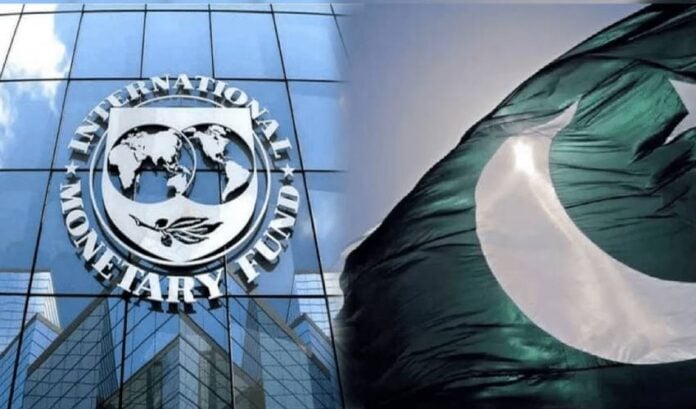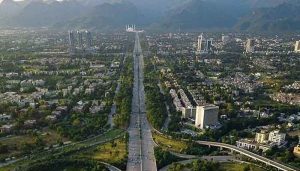Pakistan’s economy, long marred by recurring balance-of-payment crises, persistent structural bottlenecks, and cyclical political disruptions, has entered a critical phase of recovery in 2025. At the heart of this turn lies a $7 billion International Monetary Fund (IMF) Extended Fund Facility (EFF), a high-stakes stabilization program launched to rescue the economy from default and restore macroeconomic balance. The program, approved in mid-2024, is Pakistan’s 23rd agreement with the IMF since 1958 and perhaps its most stringent yet. But unlike the short-lived optimism of past programs, this one has begun to deliver visible, quantifiable changes. Inflation has dramatically declined. Interest rates are easing. Fiscal discipline is showing signs of maturity. Growth has returned, though slowly. Yet, underneath these improvements lie serious structural headwinds that continue to test the country’s resilience and political will.
At the time of entering the EFF arrangement, Pakistan was on the verge of a sovereign default. Foreign exchange reserves had fallen below $3 billion, barely enough to cover three weeks of imports. The Pakistani rupee had lost more than 50% of its value over 18 months. Inflation had surged to a 50-year high of 38% in May 2023, driven by global energy prices, domestic supply shocks, and excessive monetary expansion. The fiscal deficit had widened to nearly 7.9% of GDP, while public debt stood at over PKR 76 trillion, or roughly 75% of GDP. The IMF agreement came with strict performance criteria to address these imbalances, including tax reforms, subsidy rationalisation, market-based exchange rate policies, and tighter monetary controls.
One of the most impressive outcomes of the IMF-backed stabilisation has been the collapse of inflation. From its peak in mid-2023, inflation has steadily dropped to 0.3% in April 2025—its lowest level in over 35 years. The decline is attributed to several factors, including a stable exchange rate following central bank intervention, improved food supply management, global disinflationary trends, and, most notably, a sharp reduction in domestic demand due to tight monetary policy. The State Bank of Pakistan (SBP), which had held interest rates at a record high of 22% for nearly a year, has now begun to loosen its stance. In a significant policy move, the SBP reduced the policy rate by 500 basis points between January and May 2025, bringing it down to 17%. Real interest rates, once profoundly negative, have now normalised, and market confidence in central bank autonomy has improved.
These monetary developments have begun to support a gradual economic rebound. Pakistan’s GDP growth, which had contracted by -0.2% in FY2023, is now estimated to have recovered to 2.7% in FY2025. While this falls short of the government’s initial target of 3.6%, it reflects a return to modest expansion amid global and domestic constraints. The key drivers of growth include a recovery in large-scale manufacturing (LSM), particularly in textiles and auto parts; higher remittance inflows from the Middle East; and improved agricultural output due to favourable weather and increased fertiliser subsidies. Wheat production hit a record 28.2 million tons, while cotton output rebounded to 8.5 million bales—helping restore balance in food and fibre markets. The services sector’s growth remained muted due to weak consumption, but fintech, e-commerce, and logistics sectors saw positive traction.
However, this recovery remains fragile. Core structural weaknesses persist, continuing to limit the economy’s potential. The tax-to-GDP ratio remains under 10%, among the lowest in emerging markets. Despite ambitious revenue targets under the IMF program, the Federal Board of Revenue (FBR) continues to struggle with under-reporting, exemptions, and administrative inefficiencies. A new tax code introduced in March 2025 aims to bring agriculture, real estate, and retail under the tax net, but political resistance remains strong. Provinces have yet to align their fiscal commitments with the national stabilisation framework, adding friction to the federal-provincial budgetary compact.
The energy sector also remains a critical drag on fiscal consolidation. The power sector circular debt, which stood at PKR 2.6 trillion in early 2024, remains dangerously high, despite repeated tariff adjustments. The government has taken the politically unpopular step of increasing base tariffs by 15–20% in urban centres and has phased out untargeted subsidies for industrial and residential consumers. These reforms, though necessary, have triggered labour protests and industrial closures, especially in Punjab. IMF benchmarks require the government to eliminate the buildup of fresh circular debt entirely by FY2026. This target, many analysts believe, will be challenging to meet without further privatisation or structural reforms in power distribution companies (DISCOs).
Public debt remains a central concern. As of March 2025, total public debt had surpassed PKR 76.4 trillion, driven by both domestic borrowing and exchange rate revaluation. Interest payments now consume over 52% of federal revenues, crowding out development expenditure and weakening fiscal flexibility. However, the IMF program has insisted on primary surplus targets, requiring that non-interest revenues exceed non-interest spending. For FY2025, the government has achieved a primary surplus of 0.8%, its first in almost two decades. This has been achieved by cutting non-essential expenditures, deferring defence procurement, and freezing federal hiring. The credibility of this adjustment has helped unlock budgetary support from other multilateral lenders, including the World Bank and the Asian Development Bank. It has encouraged commercial creditors to consider re-engaging in the future.
The external account has shown signs of stabilisation. The current account deficit has narrowed significantly, from $17 billion in FY2022 to just $2.4 billion in FY2025. This has been driven by reduced imports (especially of oil, machinery, and luxury goods), steady remittance flows of over $29 billion, and improved services exports. The Pakistani rupee has stabilized around 278–285 per USD, and the SBP has been able to rebuild gross foreign exchange reserves to $9.2 billion as of June 2025—up from a critical low of $2.9 billion in mid-2023. With net international reserves turning positive for the first time in five years, currency markets are more stable, and forward premiums have reduced sharply.
The fiscal outlook for FY2026 remains cautiously optimistic, but it is heavily reliant on the continuation of reforms. The government has set a GDP growth target of 4.2% for FY2026, relying on investment recovery, increased development spending, and improved agricultural productivity. Yet this projection faces serious risks. Global oil prices remain volatile, with Brent prices fluctuating between $85 and $95 per barrel. Geo-economic fragmentation, especially due to regional tensions and new trade barriers, could dampen exports. Domestically, political uncertainty remains a key risk. With general elections expected in late 2026, the temptation to reverse unpopular reforms or offer populist concessions could derail fiscal discipline.
One central area of focus is the revival of investment. Private investment as a share of GDP fell below 11% in 2023, one of the lowest in the region. The government, under the guidance of the IMF, has unveiled a new “Rebuild Pakistan Investment Charter” that offers tax incentives, legal protection, and fast-track approvals for strategic sectors, including IT, agriculture, tourism, and renewable energy. Special Economic Zones (SEZs) under the China-Pakistan Economic Corridor (CPEC) are being repackaged with upgraded infrastructure and simplified customs procedures. Foreign direct investment (FDI), which had dropped to just $1.3 billion in 2023, rebounded to $2.6 billion in FY2025 and is expected to cross $4 billion by next year if reforms continue.
Monetary and financial sector reforms have also gained traction. The central bank has tightened regulations around exchange companies to curb speculative trading and has launched a digital FX reporting system. A comprehensive diagnostic of the banking sector, supported by the IMF, is underway to assess capital adequacy, asset quality, and exposure risks. Initial findings suggest that while the top-tier banks remain resilient, smaller banks require recapitalisation or mergers. The microfinance sector, meanwhile, has shown strong resilience, expanding outreach to over 9 million borrowers with a 98% repayment rate. This sector is becoming increasingly crucial for promoting financial inclusion, particularly among women and young people in rural areas.
Social indicators, however, remain a concern. Poverty levels, which surged during the 2022–2023 crisis, are still high. The World Bank estimates that over 38% of Pakistan’s population lives below the poverty line, with food insecurity affecting over 20 million people. To address this, the government has maintained the Ehsaas unconditional cash transfer program and expanded its coverage from 7.6 million to 9.1 million families under the IMF’s social protection floor requirement. However, rising electricity prices and stagnant real wages continue to erode living standards, and any further fiscal consolidation must be accompanied by targeted social cushioning to avoid unrest.
In terms of governance and transparency, the IMF program has prompted Pakistan to enhance its public financial management. The 2025 Finance Act includes provisions for real-time budget tracking, online procurement portals, and quarterly reporting of debt and contingent liabilities. The Auditor General’s Office is being strengthened, and the Public Accounts Committee has resumed hearings after years of dormancy. These measures, though technical, represent critical steps toward restoring fiscal credibility and public trust.
The writer is the Director-General of the Punjab Sahulat Bazaars Authority.














